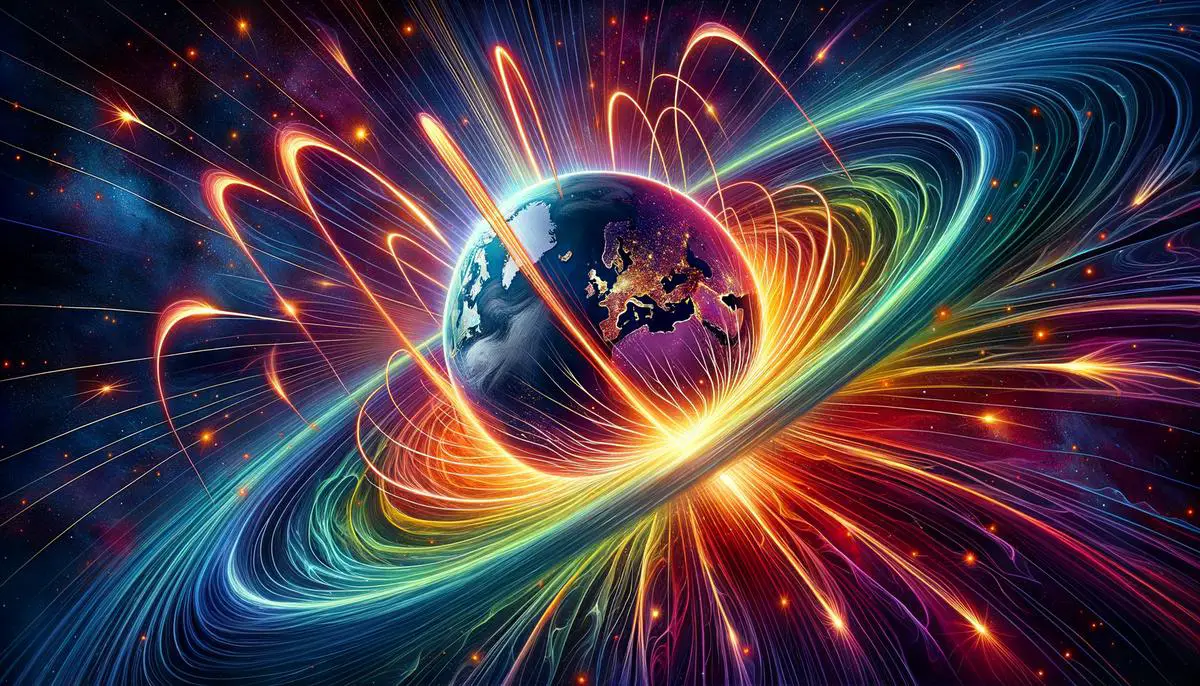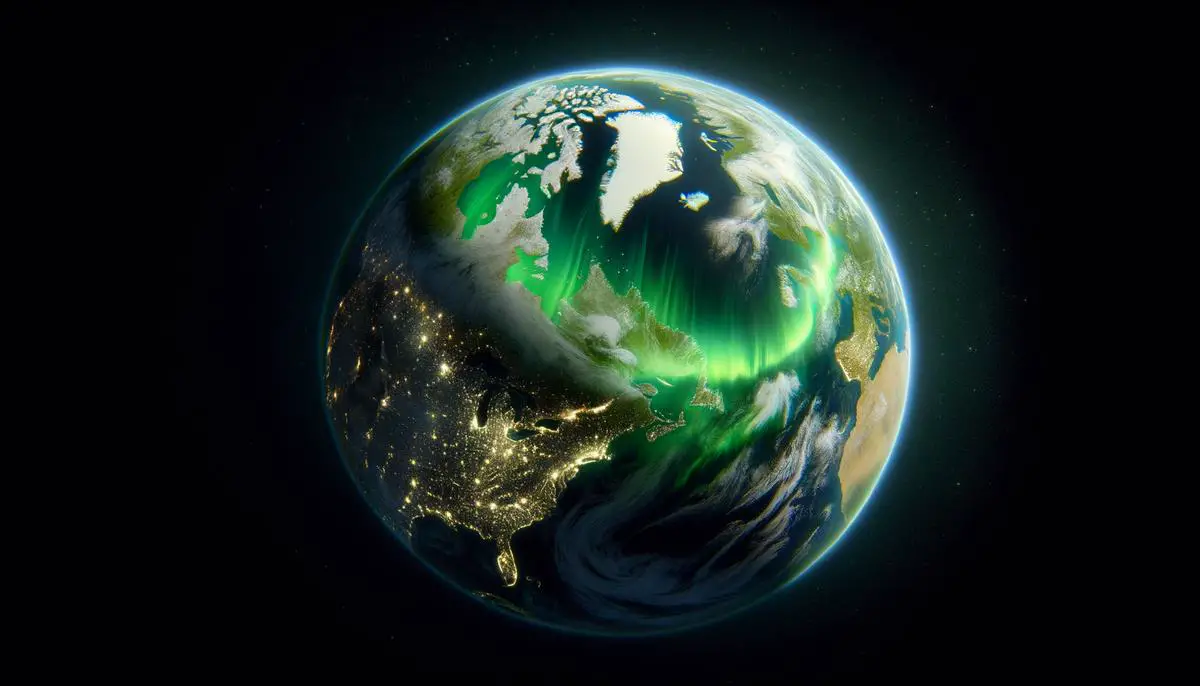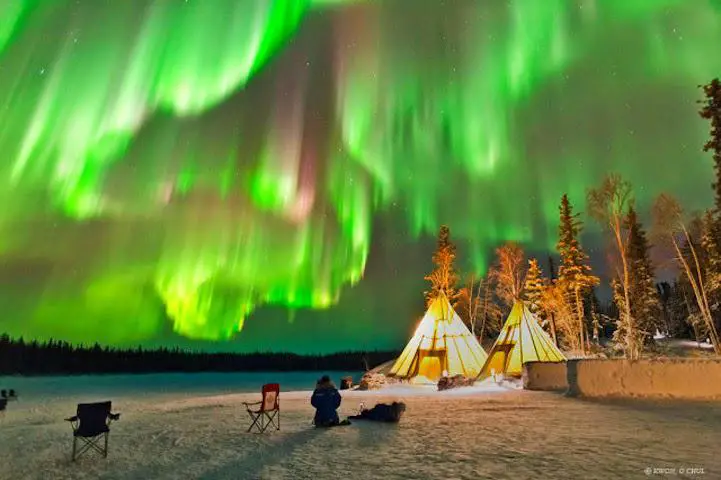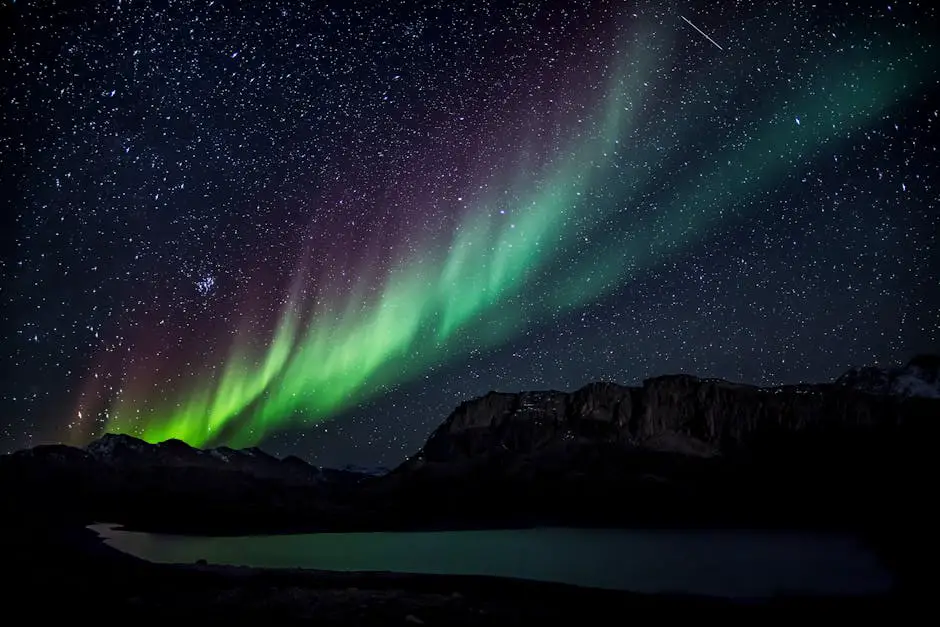The auroras, often seen as shimmering lights in the polar skies, are a captivating natural phenomenon. These lights represent a complex interplay between solar activity and Earth's magnetic field. Understanding the formation and factors influencing auroras can provide deeper insights into this mesmerizing display.
Formation of Auroras
The northern lights, or auroras, owe their existence to the Sun's energetic charged particles. These particles start their journey as part of the "solar wind," a stream of protons and electrons traveling through space. When these particles reach Earth, they encounter our planet's magnetic field, which usually redirects them.
Earth's magnetic field is particularly strong near the poles. As the solar wind approaches, the magnetic field lines stretch and strain, eventually snapping back. This action funnels charged particles down to Earth's poles via the magnetic field lines.
Upon breaching the magnetic barrier, these energetic particles plunge into Earth's upper atmosphere, where they collide with various gas molecules. This interaction produces the northern lights. The collisions prompt gas molecules to release energy, which manifests as colorful light. For example:
- When a charged particle hits an oxygen molecule, it might glow green
- A collision with nitrogen might yield a purple or blue hue
The colors and shapes of auroras can vary. Early in the night, they often appear as a broad, green arc stretching from east to west. However, when solar wind activity intensifies, this arc can become animated, writhing and shimmering like curtains. Sometimes, the lights take on more intricate forms, like bands or coronas, which appear to radiate from a single point when viewed from directly beneath.
The best displays often coincide with magnetic storms triggered by coronal mass ejections (CMEs). These CMEs can stir up geomagnetic storms powerful enough to extend auroral displays far beyond their usual polar confines, sometimes as far south as Alabama or northern California.1
Auroral activity peaks around the equinoxes, driven by the seasonal alignment of Earth's magnetic field. The interplay of charged particles, magnetic fields, and atmospheric gases during these periods amplifies the chances of witnessing these light shows.

Factors Influencing Auroras
Several factors influence the magnificence and frequency of auroras:
- Solar activity: The Sun goes through approximately 11-year cycles of activity. During solar maximums, sunspots and solar flares are more frequent, leading to increased solar wind and coronal mass ejections (CMEs).
- Coronal mass ejections: These colossal clouds of plasma can dramatically enhance geomagnetic storms upon reaching Earth.
- Earth's magnetic field: The shape and orientation of our magnetic field funnel the charged solar particles primarily to the poles.
- Geographical location: Areas near the magnetic poles, such as northern Scandinavia, Canada, and Alaska, are aurora hot spots.
- Seasonal variations: Auroras are more visible around the equinoxes, in March and September, due to Earth's axial tilt.
- Environmental conditions: Clear skies and minimal light pollution enhance visibility.
During periods of heightened solar activity, the auroral oval—the region around the magnetic poles where auroras are visible—can expand, offering a broader chance for people in more temperate regions to glimpse this phenomenon.2
Winter months offer longer, darker nights, providing an ideal backdrop for spotting these lights. The best aurora viewing experiences occur far from city lights, where light pollution is minimal. Remote and dark places are the favored spots for aurora chasers.

Scientific and Visual Characteristics
Auroras present themselves in a stunning array of forms and colors. Early in the evening, they often begin as broad, faint arcs stretching from east to west. These arcs are typically greenish in color with well-defined lower edges and diffused upper regions. As solar wind activity intensifies, these static arcs may transform into dynamic bands, resembling fluttering curtains that dance across the sky.
One of the most captivating forms of auroras is the corona. When standing directly under an active auroral display, the lights can radiate outwards from a central point, creating a "crown" effect. This phenomenon occurs due to the alignment of the viewer's perspective with Earth's magnetic field lines.
Aurora Colors and Their Origins
| Color | Gas | Altitude |
|---|---|---|
| Red | Oxygen | ~180 miles (300 km) |
| Green | Oxygen | Up to 60 miles (100 km) |
| Purple, Blue, Pink | Nitrogen | Various |
Given that green is more easily detectable by the human eye, it is often the predominant color observed. Nitrogen can produce a range of colors including purples, blues, and pinks, especially during powerful geomagnetic storms.
The different particles involved—protons and electrons from the solar wind—also influence the shapes and behaviors of auroras. Electrons are more efficient at transferring energy to atmospheric gases, leading to brighter and more vivid displays.
"The aurora is a testament to the invisible connections between our planet and the Sun." – Dr. Elizabeth MacDonald, NASA Space Physicist3
Auroral displays can be predicted and monitored through a combination of satellite data and ground-based observations. Space weather prediction centers track solar activity, sunspot occurrences, and coronal mass ejections to forecast geomagnetic storms. Advanced models then predict how these events can force disturbances within Earth's magnetosphere, giving rise to auroras at specific times and places.
Clear skies and minimal light pollution are essential for observing these visual characteristics. Remote locations in regions like Scandinavia, Alaska, and Canada are therefore prime spots for aurora viewing. As technology advances, predictive tools make it increasingly possible for both scientists and the public to plan their observations, maximizing their chances to witness these breathtaking natural phenomena.

The aurora borealis is a testament to the intricate interplay between solar winds and Earth's magnetic shield. This celestial display of colors and forms continues to captivate observers, offering both scientific intrigue and natural beauty. Whether viewed from polar regions or during rare geomagnetic storms in temperate zones, the northern lights remain an awe-inspiring reminder of our planet's dynamic relationship with the Sun.
- Carlowicz M, Hill F. Secrets of the Aurora Borealis. Alaska Geographic Society; 2001.
- Akasofu SI. Exploring the Secrets of the Aurora. Springer Science & Business Media; 2007.
- MacDonald E. Northern Lights: The Science, Myth, and Wonder of Aurora Borealis. Mountaineers Books; 2021.
![]()
